

Click to read general information about afghans



Buy a pattern
for this afghan
on the order form
 Buy now
Buy now


WINDOWS 100
I see this as rows of ten windows in ten coloured columns. Others see it differently.
If you look at it as a series of squares surrounded by squares, each of the 100 squares shows a different combination.
It is an interesting study in colour. Colours sometimes appear to change, depending on which colour they are surrounded by.
It was designed at around the same time Windows 97 was released -
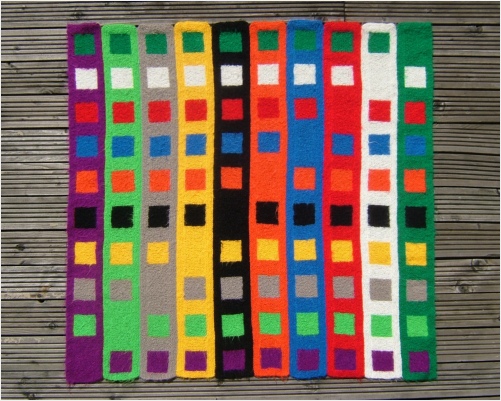
The idea for Windows 100 came from Graeco-
The ten colours were purple, green, beige, yellow, black, orange, blue, red, white and turquoise. These colours were not specially chosen. We had decided it would be nice to soften the edges of the squares by using a slightly fluffy yarn and happened to have sufficient yarn in these ten colours. The design would have worked equally well in any ten colours provided that they were easily distinguishable.
Each colour would be at the centre of ten squares, each of which had a border of a different colour. For example, yellow would be at the centre of ten squares and would be surrounded by purple, green, beige, yellow, black, orange, blue, red, white and turquoise.
The original plan underwent a change -
The technical reason was that it was much easier to make long strips than individual squares.The centre of each strip was knitted first then more knitting was added all along each strip to form the sides of the ‘squares’.
Windows 100 also proved to be a study in colour, even though we had not deliberately chosen the colours. It was very obvious that the black-
To study the effects colours have on each other, use as many different coloured papers as possible and cut one
large piece and one small piece of each. Place the small pieces, one at a time, on the large pieces and look at the way the colours appear to change.
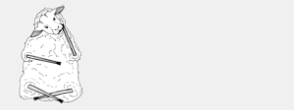
Scroll down for more information about
Windows 100

RELATED DESIGNS
PERMUTATION AFGHANS
PERMUTATION CUSHION

CONSTRUCTION INFORMATION
Knitted in ten strips which are stitched together.
Only one ball of yarn is used at a time.

KNITTING INFORMATION
Use any yarn in ten colours. The original was made in DK.
Change the size of the afghan by using a different thickness of yarn or by changing the size of the squares and/or columns.
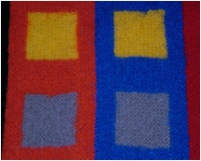
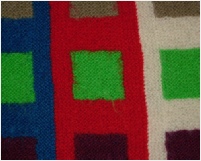
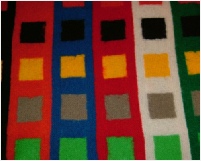
Click to see
larger pictures